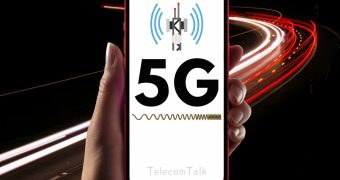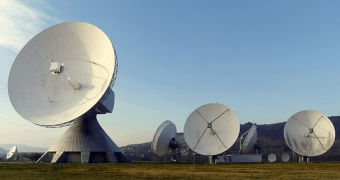
The Department of Telecommunications (DoT), Government of India and the International Telecommunication Union (ITU) have signed a Letter of Intent (LoI) to drive joint initiatives in cutting-edge technologies, including digital twins, AI-driven solutions, virtual worlds, and IMT-2030 advancements. The agreement also focuses on promoting the development of global standards, fostering sustainable development through shared frameworks, and promoting citizen engagement in urban and infrastructure planning.
Also Read: Govt Looking to Ensure 100 Mbps Per Customer With 6G: Report
India and ITU Strengthen Partnership
"Neeraj Mittal, Secretary (Telecom), Department of Telecommunications (DoT), Government of India, embarked on an official visit to Geneva today to further strengthen India's global digital leadership and deepen engagements with key international stakeholders in the telecommunication sector," the Ministry of Communications announced on February 17, 2025.
According to the Communications Ministry, Mittal held high-level discussions with ITU Secretary-General Doreen Bogdan-Martin, reaffirming India's commitment to digital inclusion and innovation. "Key focus areas of discussion included India's leadership in 5G/6G technologies, AI for Digital Transformation, cybersecurity frameworks, and ITU's Partner2Connect initiative aimed at bridging the global digital divide. India also reiterated its pledge to support ITU's initiatives by contributing to global connectivity projects and skill development programs."
India also proposed to host the ITU Plenipotentiary Conference 2030, which received a positive response, with further deliberations planned at the upcoming ITU Council Meeting.
Also Read: India to Operate Entirely on 5G by 2026, Developing Indigenous 6G: Report
AI-Driven Digital Twin Technologies
According to the Ministry, the collaboration marks a paradigm shift in telecom from connectivity to intelligence-driven infrastructure planning.
The Department of Telecommunications noted that mobile communication technologies are evolving beyond traditional connectivity to become essential platforms for innovative infrastructure planning.
"By seamlessly integrating AI, Digital Twins, and real-time, ubiquitous connectivity into a unified ecosystem, these technologies generate pervasive intelligence, enabling open, interconnected systems that fundamentally transform how infrastructure is planned, collaborated on, and executed across critical sectors like transport, urban development, and healthcare. These advancements enable infrastructure planning to be more dynamic, adaptive, and sustainable, benefiting all sectors," the communications ministry said.
"The collaboration through the LoI marks a significant shift in the telecom sector’s role—evolving from simply providing connectivity to becoming a platform that delivers accurate, reliable, and insightful data for infrastructure planning," the ministry added. "It opens up opportunities to explore innovative business models, enabling a new ecosystem to deliver scalable, data-driven, and knowledge- based solutions across industries, driving sustainable growth and shaping the future of infrastructure."
Also Read: Fastest 5G Rollout Globally Highlights India’s Technological Prowess in Telecom: Economic Survey
Key Focus Areas of the Collaboration
Knowledge Sharing and Capacity Building – Leveraging insights from India's Sangam initiative and ITU's Citiverse for integrated urban planning.
Global Standards Development – Contributing to ITU-T Study Group 20 on IoT, APIs, digital twins, and smart cities.
Sandbox Environments – Creating testbeds for digital twin technologies and regulatory innovations.
Citizen Engagement – Using AI-powered platforms to engage citizens in real-time urban planning and infrastructure development, enhancing participatory governance and collaborative decision-making.
Privacy and AI Integration – Advancing privacy-enhancing techniques (PETs) and country-specific AI models for urban mobility.
AI Model Integration for Digital Twins – Customising AI models using country-specific datasets to deliver context-sensitive solutions for infrastructure development and urban mobility challenges.
















